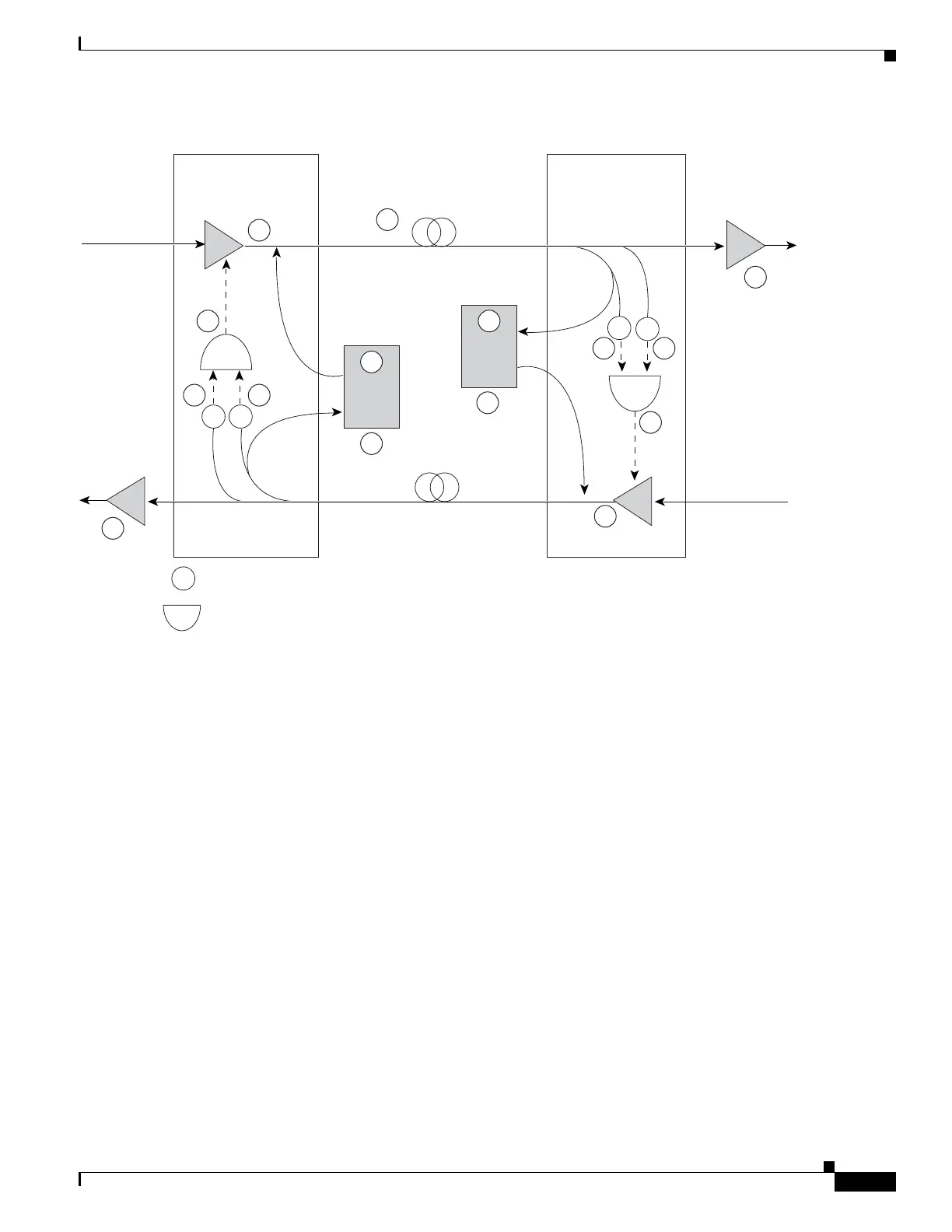10-21
Cisco ONS 15454 DWDM Reference Manual, R8.5
78-18343-02
Chapter 10 Network Reference
10.7.3 Fiber Cut Scenarios
Figure 10-14 Nodes Using OPT-BST/OPT-BST-E Cards
Two photodiodes at Node B monitor the received signal strength for the optical payload and OSC signals.
When the fiber is cut, an LOS is detected at both of the photodiodes. The AND function then indicates
an overall LOS condition, which causes the OPT-BST/OPT-BST-E transmitter, OPT-PRE transmitter,
and OSCM lasers to shut down. This in turn leads to an LOS for both the optical payload and OSC at
Node A, which causes Node A to turn off the OSCM, OPT-PRE transmitter, and OPT-BST/OPT-BST-E
transmitter lasers. The sequence of events after a fiber cut is as follows (refer to the numbered circles in
Figure 10-14):
1. Fiber is cut.
2. The Node B power monitoring photodiode detects a Loss of Incoming Payload (LOS-P) on the
OPT-BST/OPT-BST-E card. Refer to the Cisco ONS 15454 DWDM Troubleshooting Guide.
3. On the OPT-BST/OPT-BST-E card, the simultaneous LOS-O and LOS-P detection triggers a
command to shut down the amplifier. CTC reports an LOS alarm (loss of continuity), while LOS-O
and LOS-P are demoted. Refer to the Cisco ONS 15454 DWDM Troubleshooting Guide.
4. The OPT-BST/OPT-BST-E card amplifier is shut down within one second.
5. The OSCM laser is shut down.
6. The OPT-PRE card automatically shuts down due to a loss of incoming optical power.
7. The Node A power monitoring photodiode detects a LOS-O on the OPT-BST/OPT-BST-E card and
the OSCM card detects a LOS (OC3) at the SONET layer. Refer to the Cisco ONS 15454 DWDM
Troubleshooting Guide.
8. The Node A power monitoring photodiode detects a LOS-P on the OPT-BST/OPT-BST-E card.
Refer to the Cisco ONS 15454 DWDM Troubleshooting Guide.
OPT-BST/OPT-BST-E OPT-BST/OPT-BST-E
P
P
P
OSCM
PP
OSCM
= power monitoring photodiode
= logical AND function
Node A
Side B
Node B
Side A
X
11
1
7
13
10
9 8
12
6
2 3
4
5
2
8
120988
OPT-PRE
OPT-PRE

